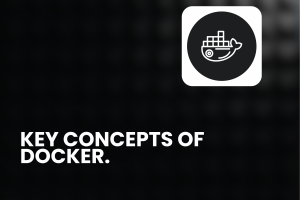
The Human Side of Web Development: Designing for People, Not Just Platforms
In today’s fast-paced digital world, web development is often discussed in terms of tools, frameworks, and performance metrics. But beyond the lines of code and responsive layouts lies something more profound: the human experience. Web development has evolved far beyond just building websites. It’s about crafting digital experiences that resonate with people, making them feel understood, supported, and engaged. In 2025, the best developers and designers are not just coding for screens; they’re designing for emotions. This is the human side of web development, where creativity meets technology, and empathy meets innovation. 1. Designing With Empathy Behind every click, tap, or scroll is a person, not a user ID or traffic metric. Empathy is at the heart of modern web design. It means understanding what people need, how they think, and what frustrates them online. Empathy-driven design starts with asking: “What is my user trying to achieve, and how can

From Static Pages to Dynamic Experiences: The Real Story of How Web Development Evolved
A journey through the evolution of the web, and what every modern developer should learn from it. The Early Web: When Everything Was Static In the beginning, the web was… quiet.The year was 1991, and websites looked more like online newspapers than apps.Developers wrote everything in HTML, line by line, without CSS or JavaScript. A page wasn’t something you interacted with, it was something you read.If you wanted to change a line of text, you’d open the file, edit the code, and upload it again via FTP. It was simple, but limited. Every new page meant a new .html file.There was no dynamic content, no animations, no interactivity. Yet, those early developers built the foundation of everything we do today. The Breakthrough: CSS and JavaScript Arrive By the late ’90s, two technologies changed everything: Suddenly, the web wasn’t static anymore.You could make dropdown menus, validate forms, and even change content

The First of Software Development: From Concept to Code
Software development did not begin with sleek laptops or vast data centers — it began as an idea. The journey from abstract mathematics to digital logic, and eventually to functional software, spans nearly two centuries. To understand the “first” of software development is to trace humanity’s effort to teach machines to think, calculate, and ultimately assist in shaping the modern world. What made her contribution revolutionary wasn’t just the algorithm itself, but her understanding that the Analytical Engine could manipulate not only numbers, but also symbols, patterns, and eventually ideas. She predicted that machines could one day compose music, produce graphics, and even assist in scientific discovery. Although Babbage’s machine was never completed, Lovelace’s notes from 1843 laid the philosophical foundation of software — instructions that tell hardware how to act. 2. From Theory to Reality: The Dawn of Programmable Machines The next major leap came a century later, during

KEY CONCEPTS OF DOCKER
Docker is a tool that packages applications and their dependencies into a standardised unit called a container Key Concepts 1. Docker Container A container is a self-contained, executable software package that includes everything needed to run an application, such as code, libraries, and dependencies. Containers are isolated, self-contained environments that run on a single operating system kernel. Think of it like a shipping container for software: it holds everything an application needs to run, no matter where it’s being shipped (or deployed). A container is an instance of a Docker image. A container is a running instance of a Docker image. When you run an image, Docker creates a container, which is a lightweight, isolated environment. You can start, stop, move, or delete containers. Multiple containers can run on the same machine, each completely separate from the others. Docker containers are isolated, ensuring that containers can run on the same

Why Express.js Makes Node.js Development Easier
When it comes to modern web development, Node.js has become one of the most popular platforms for building fast and scalable applications. It allows developers to use JavaScript on the server side, eliminating the need to switch between languages when working on both frontend and backend. However, working with raw Node.js can sometimes be tedious. Developers often find themselves writing repetitive code for routing, handling requests, and managing middleware. That’s where Express.js, the most widely used Node.js framework, comes in.What is Express.js?Express.js is a lightweight, flexible framework built on top of Node.js. It provides a simple way to handle web requests, define routes, and integrate middleware. In short,Express makes building APIs and web applications faster, cleaner, and far more efficient. If you’ve ever asked yourself ‘why use Express with Node.js?’, the answer is simple: it saves time, reduces complexity, and gives your code structure without sacrificing flexibility.How Express.js Makes Development

5 Red Flags in APIs That Attackers Instantly Notice
APIs are the most exposed layer of modern applications—and often the least protected.In many breaches, the same weaknesses appear repeatedly: overlooked configurations, excessive privileges, and misplaced trust in “internal” boundaries.The following five red flags represent common API flaws that attackers quickly identify and exploit. 1. Over-Permissive Tokens Description: Access tokens that grant excessive privileges across roles, scopes, or services. Risk:A single leaked token can expose sensitive endpoints, including administrative or internal APIs.Tokens frequently leak through logs, SDKs, session storage, or third-party integrations. Mitigation:Apply least-privilege principles.Limit scopes and reduce token lifetime (especially for JWTs).Rotate tokens and monitor scope usage.Enforce access control on the server side. 2. No Rate Limiting or Abuse Protection Description: APIs that allow unlimited requests without throttling, filtering, or anomaly detection. Risk:Enables brute-force, credential stuffing, and account enumeration attacks.Creates performance issues for legitimate users. Mitigation:Implement global and per-user rate limits.Use CAPTCHA or step-up authentication for suspicious activity.Apply velocity
